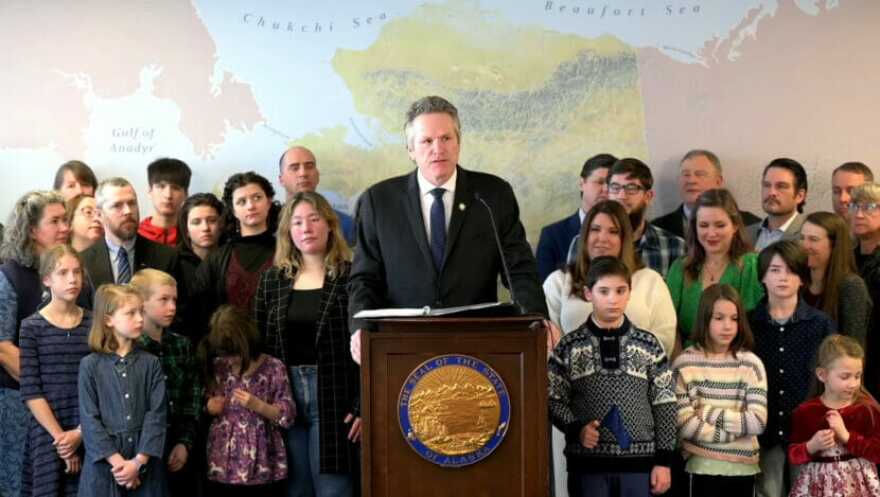Gov. Mike Dunleavy announced a bill Tuesday that would increase the amount of parental permission needed to teach sex education and change students’ names or pronouns in school.
If passed by the Legislature, students would need their parents’ permission before taking a sex education class or joining a program or club related to gender and sexuality.
“There should never be a case where a parent sends their kids to school, and the child comes back having discussions about things they’ve learned in school that may be a sensitive issue or an affront to a parent’s values,” Dunleavy said at a press conference Tuesday.
The bill would require school districts to separate student locker room and bathroom facilities by biological sex rather than gender identity, provide access to single stall restrooms or adopt other protocols to address “the physical safety and privacy of students in locker rooms and restrooms,” according to Dunleavy’s office.
Parents would also need to provide written permission for students to change their names or pronouns at school.
Anchorage Democratic Sen. Loki Töbin chairs the Senate Education Committee. She said the bill could increase feelings of isolation among LGBTQ students.
“They are probably our most vulnerable young people, and in many cases, their public school is the safest place for them,” she said. “It’s where there’s a trusted adult that sees them for who they are. It’s where they can go by their correct name and their correct pronouns and where they get to be a kid.”
Dunleavy denied that the bill targets queer and transgender youth. Instead, he said, it’s meant to strengthen parental rights and increase transparency in schools.
“This isn’t targeting anybody,” he said. “This is really reaffirming parental rights, and that the parents of these children have the right to know what their children are doing in school.”
Dunleavy also introduced a bill Tuesday to increase teacher recruitment and retention by giving full-time teachers an annual payment for the next three years. Payments could be $5,000, $10,000 or $15,000 depending on the district, with the highest payments going to teachers in the most remote areas.

